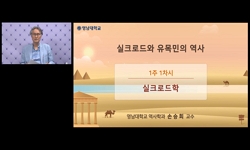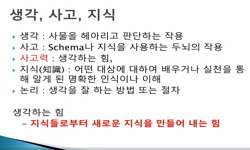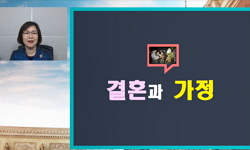The mainrites of passages of the Kyrgyz nomads include the cradle, sunnot toi, ritual of circumcision, wedding, funeral, and memorial rituals. Each of these rituals features characteristics of the nomads` way of life. Horses, sheep, goats, and yak pro...
http://chineseinput.net/에서 pinyin(병음)방식으로 중국어를 변환할 수 있습니다.
변환된 중국어를 복사하여 사용하시면 됩니다.
- 中文 을 입력하시려면 zhongwen을 입력하시고 space를누르시면됩니다.
- 北京 을 입력하시려면 beijing을 입력하시고 space를 누르시면 됩니다.
https://www.riss.kr/link?id=A99726247
- 저자
- 발행기관
- 학술지명
- 권호사항
-
발행연도
2013
-
작성언어
Korean
- 주제어
-
KDC
916
-
등재정보
KCI등재
-
자료형태
학술저널
- 발행기관 URL
-
수록면
129-155(27쪽)
-
KCI 피인용횟수
1
- DOI식별코드
- 제공처
-
0
상세조회 -
0
다운로드
부가정보
다국어 초록 (Multilingual Abstract)
The mainrites of passages of the Kyrgyz nomads include the cradle, sunnot toi, ritual of circumcision, wedding, funeral, and memorial rituals. Each of these rituals features characteristics of the nomads` way of life. Horses, sheep, goats, and yak provide the meat and milk used in these rituals, while horses play other important roles. This study examines the role and significance of horses in Kyrgyz nomads` rites of passages. In the ritual of laying anew born child in a cradle, the cradle is a substitute for the horse`s back These nomads believe that Umai Ene, the earth with the holy power of the horse, symbolized by a cradle. The ritual circumcision of male babies has a symbolic meaning as the first ritual that distinguishes the roles of males and females in society. After undergoing this ritual, male babies are accepted as crucial components of the nomadic society, and can henceforth own horses. The ritual is supposed to symbolize the baby`s proper entry into the nomadic life, with the emphasis on the skillful handing of horses. As is the casepretty much everywhere else, the wedding is a ritual that celebrates the start of a new and hopefully prolific family. The wedding serves as an occasion that completes the cycle of a patriarchal nomadic family, with the usual accompaniment of horses. Among Kyrgyz nomads, the tradition of the bridegroom paying kalym, the price paid for the bride, is still kept. Women were compelled to make an oral oath that she would take good care of her husband`s horses. Even in the funeral ritual, horses are important. In the past, a horse would be buried alive along with its master`s dead body. Nowadays, a feature of this age old tradition remains. Sometimes a favorite horse is killed upon the death of its master, or horsehair is hung on a pole to mark the tomb. The nomadsalso prepare horse meat for a memorial ceremony to representthe wish that the deceased may be accompanied into the afterlife by a horse. As noted above, Kyrgyz nomadic life starts with horses.A horse is one of the most important elements ofthis nomadic life, Males are required to handle their horses skillfully. Diverse horse associated plays and games have also developed over time, as well as horse related religions. Life without horses is unthinkable for the Kyrgyz nomads. Furthermore, theybelieve that horses have their own sacred rights, in addition to being important livestock. Besides being a convenient means of transportation, horses are life partners. Such a pattern will not change as long as they maintain their nomadic way of life.
참고문헌 (Reference)
1 하자노프, "유목사회의 구조" 지식산업사 1990
2 장준희, "문명의 실크로드를 걷다" 청아출판사 2012
3 Потапов Л.П, "Тюркоязычных народов мифология" 2 : 1992
4 Токарев С.А, "Обычаи, обряды и поверья, связанные с животноводством" Календарные обычаи и обряды в странах зарубежной Европы 1983
5 Мироненко М.С, "Молочное коневодства в Киргизии Фрунзе"
6 Табалдиев К.Ш, "Курганы средневековых кочевых племен Тянь-Шаня" Би шкек 1996
7 Соколова, "Культ животных в религиях" Наука 1972
8 Садыков Б.Х, "Конина" Алма-ата 1981
9 Марков М.И, "Истори конницы. Ч. 1,2" Тверь 1986
10 ЛитвинскийБ.А, "Древние кочевники" Крыша мира 1972
1 하자노프, "유목사회의 구조" 지식산업사 1990
2 장준희, "문명의 실크로드를 걷다" 청아출판사 2012
3 Потапов Л.П, "Тюркоязычных народов мифология" 2 : 1992
4 Токарев С.А, "Обычаи, обряды и поверья, связанные с животноводством" Календарные обычаи и обряды в странах зарубежной Европы 1983
5 Мироненко М.С, "Молочное коневодства в Киргизии Фрунзе"
6 Табалдиев К.Ш, "Курганы средневековых кочевых племен Тянь-Шаня" Би шкек 1996
7 Соколова, "Культ животных в религиях" Наука 1972
8 Садыков Б.Х, "Конина" Алма-ата 1981
9 Марков М.И, "Истори конницы. Ч. 1,2" Тверь 1986
10 ЛитвинскийБ.А, "Древние кочевники" Крыша мира 1972
11 Зайнолла Самашев, "Берел" Таймас 2011
12 장준희, "[단행본] 중앙아시아-대륙의 오아시스를 찾아서" 청아출판사 2004
동일학술지(권/호) 다른 논문
-
몽골 제국 카안울루스에서 연료 소비와 사회 사회,경제 변화
- 중앙아시아학회
- 설배환 ( Pae Hwan Seol )
- 2013
- KCI등재
-
쿠빌라이 시기 친킴 아흐마드 갈등의 배경과 성격 ?친킴의 한화(漢化) 문제에 대한 재검토-
- 중앙아시아학회
- 고명수 ( Myung Soo Koh )
- 2013
- KCI등재
-
- 중앙아시아학회
- 이용성 ( Yong Song Li )
- 2013
- KCI등재
-
- 중앙아시아학회
- 박환영 ( Hwan Young Park )
- 2013
- KCI등재
분석정보
인용정보 인용지수 설명보기
학술지 이력
| 연월일 | 이력구분 | 이력상세 | 등재구분 |
|---|---|---|---|
| 2028 | 평가예정 | 재인증평가 신청대상 (재인증) | |
| 2022-01-01 | 평가 | 등재학술지 유지 (재인증) |  |
| 2019-01-01 | 평가 | 등재학술지 유지 (계속평가) |  |
| 2016-01-01 | 평가 | 등재학술지 선정 (계속평가) |  |
| 2015-12-01 | 평가 | 등재후보로 하락 (기타) |  |
| 2011-01-01 | 평가 | 등재 1차 FAIL (등재유지) |  |
| 2009-01-01 | 평가 | 등재학술지 유지 (등재유지) |  |
| 2006-01-01 | 평가 | 등재학술지 선정 (등재후보2차) |  |
| 2005-01-01 | 평가 | 등재후보 1차 PASS (등재후보1차) |  |
| 2003-07-01 | 평가 | 등재후보학술지 선정 (신규평가) |  |
학술지 인용정보
| 기준연도 | WOS-KCI 통합IF(2년) | KCIF(2년) | KCIF(3년) |
|---|---|---|---|
| 2016 | 0.62 | 0.62 | 0.67 |
| KCIF(4년) | KCIF(5년) | 중심성지수(3년) | 즉시성지수 |
| 0.63 | 0.55 | 0.793 | 0.08 |





 KCI
KCI KISS
KISS






